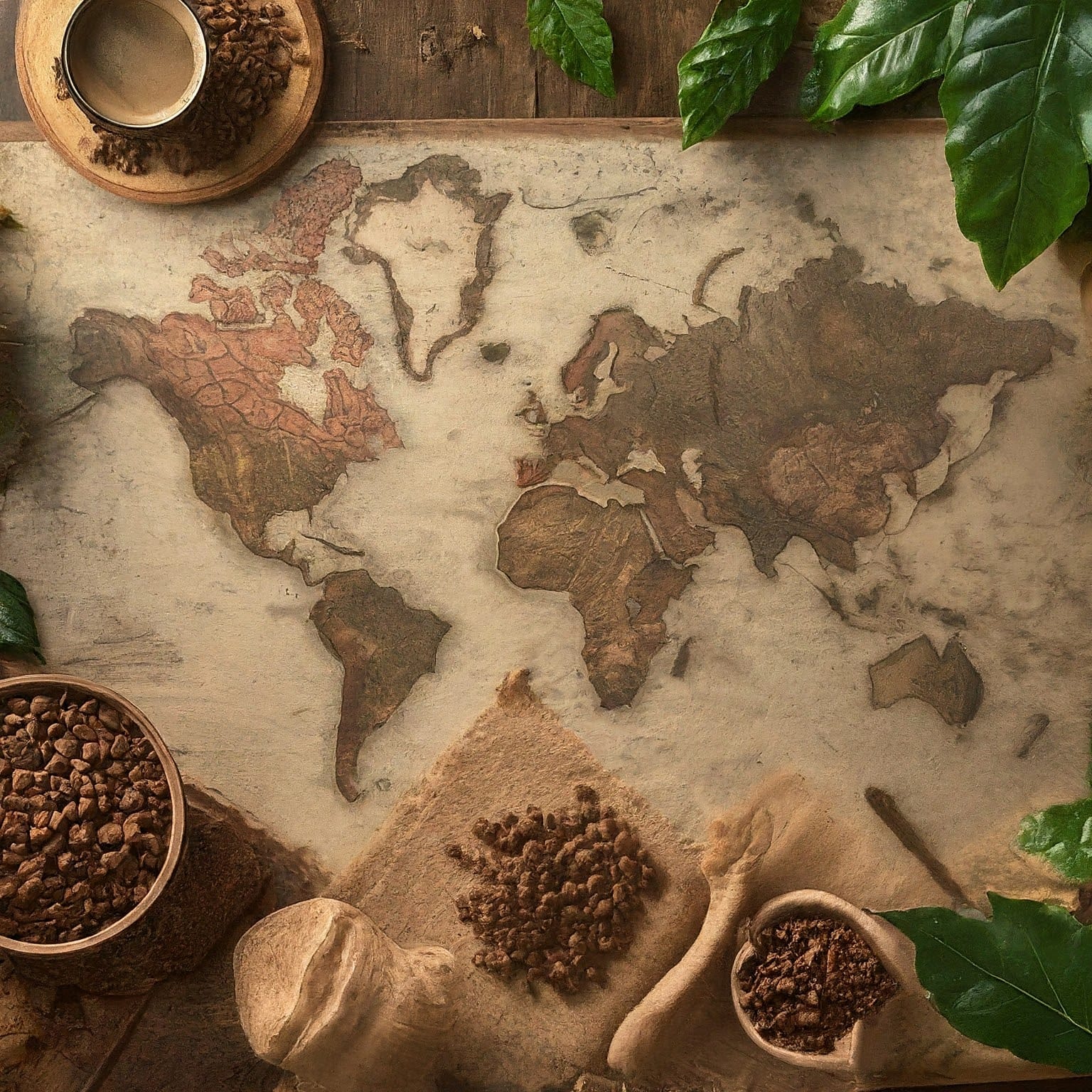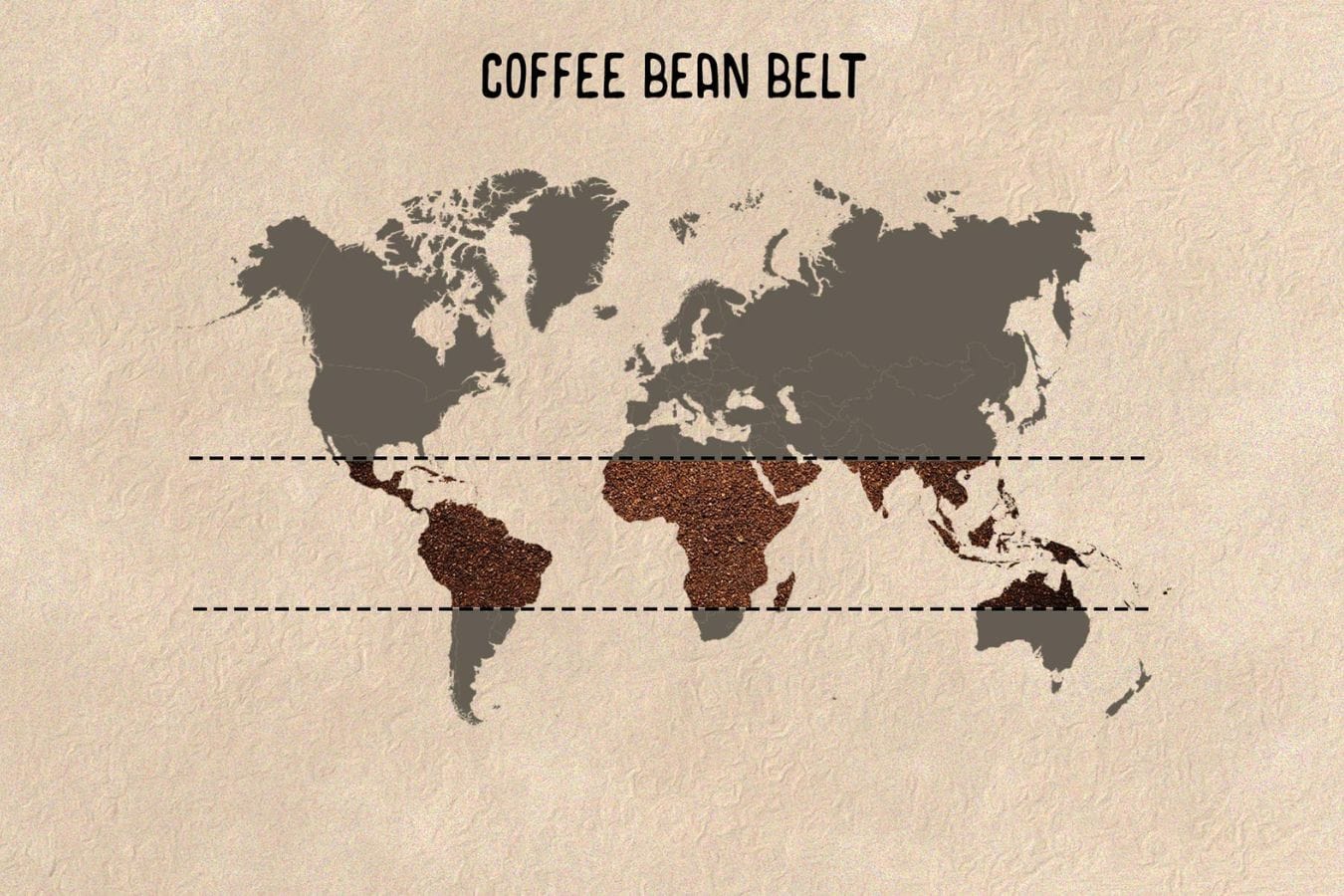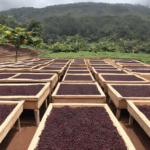We’ve delved into the intricacies of coffee taxonomy and processing, uncovering the hidden layers of flavor within each bean. Now, let’s embark on a global expedition to explore the diverse origins of coffee – the famed Bean Belt, the magical zone where most of the world’s coffee is grown.
The Bean Belt: Where Coffee Magic Happens
Imagine a lush, tropical belt encircling the globe, nestled between the Tropics of Capricorn and Cancer. This is the Bean Belt, a fertile crescent where coffee plants thrive, nurtured by ideal climates and rich volcanic soils.
A World of Flavor Awaits
Within this Bean Belt, countless countries cultivate coffee, each contributing unique characteristics to the final cup. Let’s embark on a flavor journey through some of the most renowned coffee origins:
Central and South America
Known for their balanced and approachable coffees, with flavors ranging from chocolate and nuts to bright citrus and fruit notes.
- Colombia: Renowned for its smooth, well-rounded coffees with caramel sweetness and hints of citrus.
- Brazil: The world’s largest coffee producer, offering a wide variety of flavors, from nutty and chocolatey to bright and fruity.
- Guatemala: Known for its full-bodied coffees with pronounced acidity and chocolate notes, often with a spicy kick.
Africa
Home to some of the most vibrant and complex coffees in the world, with distinctive floral, fruity, and berry flavors.
- Ethiopia: The birthplace of Arabica coffee, boasting a diverse range of flavors, from delicate floral and citrus notes to rich berry and wine-like complexities.
- Kenya: Celebrated for its bright acidity, black currant flavors, and a unique savory quality.
- Tanzania: Known for its balanced coffees with medium acidity and flavors of berries, brown sugar, and chocolate.
Asia
Offers a spectrum of flavors, from earthy and spicy to smooth and chocolatey.
- Indonesia: Famous for its full-bodied, earthy coffees with low acidity and hints of spice and dark chocolate.
- Vietnam: The second largest coffee producer globally, known for its Robusta beans and strong, bold flavors.
- India: Produces a variety of coffees, including Monsooned Malabar, known for its unique spicy and earthy notes.
Terroir: The Flavor Fingerprint
Each coffee origin carries its own distinct flavor fingerprint, shaped by a combination of factors:
- Altitude: Higher altitudes generally produce coffees with brighter acidity and more complex flavors.
- Soil: Volcanic soils, rich in minerals, contribute to the coffee’s flavor profile.
- Climate: Rainfall, temperature, and sunshine hours all play a role in shaping the coffee’s taste.
- Processing: The chosen processing method further influences the final flavor, adding another layer of complexity.
Your Coffee Passport
Exploring the Bean Belt is like embarking on a culinary adventure. Each cup tells a story of its origin, reflecting the unique terroir and cultural practices of its region. So grab your coffee passport and let your taste buds travel the world!
Up Next: Seed 102: VI. Understanding Common Coffee Terminology
Before we move on to the next stage of our coffee journey, let’s equip you with the essential vocabulary to navigate the coffee world with confidence. We’ll decode common coffee terms and phrases, empowering you to speak the language of coffee like a pro.






No Comment! Be the first one.